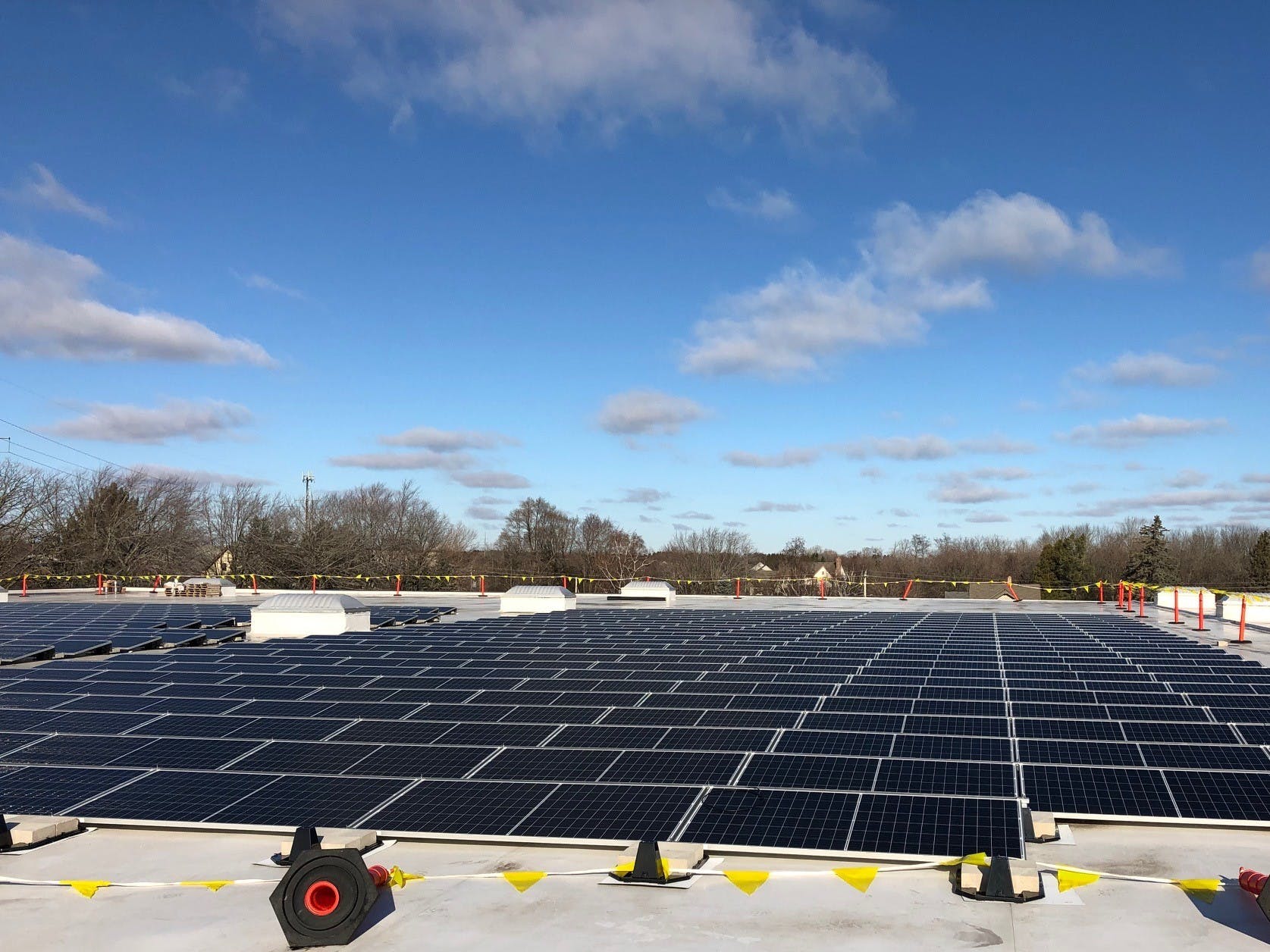Almo Corporation Adds Solar Panels to Wisconsin Warehouse Facility

Almo Corporation, a distributor of digital signage and outdoor displays, announces its continued commitment to sustainable business practices by adding 529 roof-mounted solar panels to its Wisconsin-based warehouse facility. The move allows Almo to lower energy costs and fulfill 80% of the facility’s electricity needs through sun-produced energy.
Installed by SunVest Solar, the solar panels are expected to produce 254,565 kWh of energy annually, about the average electric use of 21 homes per year, while generating enough electricity to offset 151,170 miles worth of gasoline (based on greenhouse gas emissions) and 339,420 pounds of coal (based on CO2 emissions) on a yearly basis.
The completion of the warehouse marks the third roof-based solar panel remodel Almo has completed since 2019. Almo’s 2020 conversion to solar panels for its Philadelphia HQ warehousing space has enabled Almo to send more than 65% of the solar electricity it produces back into the grid.
To learn more about Almo’s decision to invest in solar energy, watch this interview with Almo’s president and CEO Warren Chaiken and Almo’s executive VP Ed Gibbons.
According to Almo VP of operations Mike Shive, “At Almo, we are focused on sustainable business practices that reduce our overall carbon footprint and minimize our impact on the environment so we can give back to the communities where our facilities are located. Our solar-paneled warehousing facilities, which have continued to operate throughout the pandemic, have reduced electricity consumption by 45% in 2020 alone.”
Today, all Almo warehouses utilize motion-sensing lighting, which cuts electricity use in half. Almo is working to further improve warehouse lighting efficiency by another 15-25% by replacing all fixtures with LED technology.
Additionally, Almo is converting its fleet of more than 125 forklifts from liquid propane engines to battery-operated forklifts. These eco lift trucks produce 80% less CO2 emissions and operate 17% more efficiently than standard electric lift trucks.




